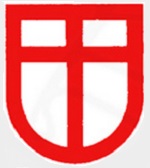Dragon DRR60511 German Sd. Kfz. 142 Sturmgeschutz III Ausf. F Assault Gun - Sturmgeschutz Abteilung 201, Eastern Front, 1942 (1:72 Scale)
"We must do everything we can to promote anti-tank defense, and work just as hard to guarantee successful counter-attacks through the instrument of powerful tank forces of our own."
- Major-General Heinz Guderian, "Achtung Panzer!"
 The Sturmgeschutz III (StuG III) assault gun was Germany's most-produced armored fighting vehicle during World War II. It was built on the chassis of the proven Panzer III tank, replacing the turret with an armored, fixed superstructure mounting a more powerful gun. Initially intended as a mobile assault gun for direct-fire support for infantry, the StuG III was continually modified, and much like the later Jagdpanzer, was widely employed as a tank destroyer.
The Sturmgeschutz III (StuG III) assault gun was Germany's most-produced armored fighting vehicle during World War II. It was built on the chassis of the proven Panzer III tank, replacing the turret with an armored, fixed superstructure mounting a more powerful gun. Initially intended as a mobile assault gun for direct-fire support for infantry, the StuG III was continually modified, and much like the later Jagdpanzer, was widely employed as a tank destroyer.
The Sturmgeschutz originated from German experiences in World War I, when it was discovered that, during the offensives on the Western Front, the infantry lacked the means to effectively engage fortifications. The artillery of the time was heavy and not mobile enough to keep up with the advancing infantry to destroy bunkers, pillboxes, and other minor fortifications with direct fire. Although the problem was well known in the German army, it was General Erich von Manstein who is considered the father of the Sturmartillerie ("assault artillery"). This is because the initial proposal was from (then) Colonel Erich von Manstein and submitted to General Ludwig Beck in 1935, suggesting that Sturmartillerie units should be used in a direct-fire support role for infantry divisions. On June 15th, 1936, Daimler-Benz AG received an order to develop an armored infantry support vehicle capable of mounting a 75 mm (2.95 in) calibre artillery piece. The gun mount's fixed, fully integrated casemate superstructure was to allow a limited traverse of a minimum of 25 degrees and provide overhead protection for the crew. The height of the vehicle was not to exceed that of the average soldier.
Daimler-Benz AG used the chassis and running gear of its recently designed Panzer III medium tank as a basis for the new vehicle. Prototype manufacture was passed over to Alkett, which produced five prototypes in 1937 on Panzer III Ausf. B chassis. These prototypes featured a mild steel superstructure and Krupp's short-barrelled, howitzer-like in appearance, 7.5 cm StuK 37 L/24 cannon. Production vehicles with this gun were known as Gepanzerter Selbstfahrlafette fur Sturmgeschutz 7.5 cm Kanone Ausfuhrung A to D (Sd.Kfz.142).
While the StuG was considered self-propelled artillery, it was not initially clear which land combat arm of the German Army would handle the new weapon. The Panzerwaffe (armored corps), the natural user of tracked fighting vehicles, had no resources to spare for the formation of StuG units, and neither did the infantry branch. It was agreed, after a discussion, it would best be employed as part of the artillery arm.
Pictured here is a 1:72 scale replica of a German Sd. Kfz. 142 Sturmgeschutz III Ausf. F assault gun that was attached to Sturmgeschutz Abteilung 201, then deployed to the Eastern Front during 1942.
Sold Out!
Dimensions:
Length: 3-1/2-inches
Width: 1-1/2-inches
Release Date: August 2017
 Historical Account: "Sturmgeschutz Vor" - The Sturmgeschutz (assault gun) units of the Wehrmacht were, contrary to popular opinion, manned by men of, and controlled by, the artillery branch, not the panzerwaffe. This is not to say that StuGs weren't used by the panzerwaffe, as they were in Panzer-Sturmgeschutz units, usually assigned to the panzergrenadier divisions, falling under the control of the artillery. This had a number of effects on their structure and employment.
Historical Account: "Sturmgeschutz Vor" - The Sturmgeschutz (assault gun) units of the Wehrmacht were, contrary to popular opinion, manned by men of, and controlled by, the artillery branch, not the panzerwaffe. This is not to say that StuGs weren't used by the panzerwaffe, as they were in Panzer-Sturmgeschutz units, usually assigned to the panzergrenadier divisions, falling under the control of the artillery. This had a number of effects on their structure and employment.
Initially StuG batteries had only six vehicles, roughly comparable in manpower to an artillery battery. By comparison, panzer companies had up to 22 tanks. At war's end the battery size had increased to 14 StuGs and the panzer company had decreased to around the same number, depending on the unit.
Much like an artillery battalion, a
Sturmgeschutz Abteilung (assault gun battalion) had 3 batteries. Late in the war, a fourth (Begleit or escort) battery of infantry was added to some units. This was intended to consist of a company-sized element of panzergrenadiers on halftracks, but shortages prevented the halftracks from being assigned and many units were lucky to get trucks. Some units had to ride on the StuGs themselves.
There seems to be a rough correlation between the redesignation of some Sturmgeschutz units as
Sturmartillerie (assault artillery) and the addition of a Begleit Batterie. Parallel to this was the redesignation of most all the Abteilungen to brigades in early 1944. This reflected the expansion of the Batterie to 10, and later 14 vehicles. Including headquarters vehicles, a late-war brigade would consist of 31 or 45 StuGs.


